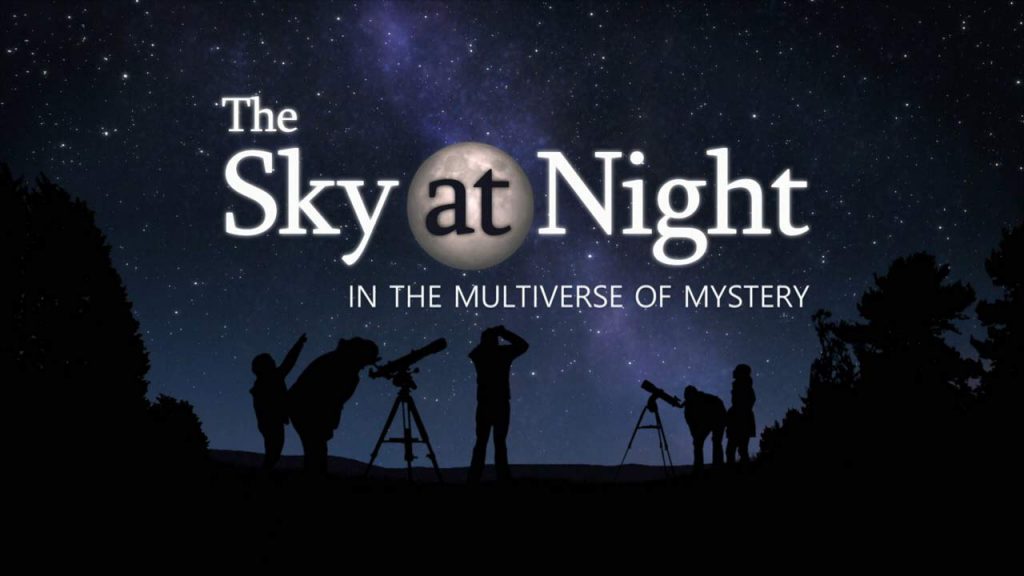The Sky at Night – The Multiverse of Mystery is a magical journey into the far-flung ideas at the very edge of scientific knowledge, exploring the concepts that today seem like science fiction but may one day become science fact. Delving into the archive at the Royal Society, we look at the dreamers who first considered the possibility of travelling to the moon and black holes long before they could be proven to exist. From there, the team explore some ideas and theories that today could be dismissed as fanciful thinking.
They imagine a world where a popular TV programme asks two scientists, Hiranya Peiris and Emma Chapman, to meet, have dinner and talk science, all under the watchful eye of maître d’ Pete Lawrence. Meanwhile, Maggie Aderin-Pocock sails off to explore the realities of interstellar travel and astrobiologist Doug Vakoch explains some of the challenges of communicating with aliens. Astrophysicist Becky Smethurst is lost in a world of black and white holes, and Chris Lintott, as you have never seen him before, argues the case for a multiverse. Along with animation from the BBC Ideas team, this edition of The Sky at Night shines a very different light on the world of astrophysics.
The Sky at Night – The Multiverse of Mystery
The multiverse is a hypothetical group of multiple universes. Together, these universes comprise everything that exists: the entirety of space, time, matter, energy, information, and the physical laws and constants that describe them. The different universes within the multiverse are called “parallel universes”, “other universes”, “alternate universes”, or “many worlds”.
Multiple universes have been hypothesized in cosmology, physics, astronomy, religion, philosophy, transpersonal psychology, music, and all kinds of literature, particularly in science fiction, comic books and fantasy. In these contexts, parallel universes are also called “alternate universes”, “quantum universes”, “interpenetrating dimensions”, “parallel universes”, “parallel dimensions”, “parallel worlds”, “parallel realities”, “quantum realities”, “alternate realities”, “alternate timelines”, “alternate dimensions” and “dimensional planes”.
The physics community has debated the various multiverse theories over time. Prominent physicists are divided about whether any other universes exist outside of our own.
Some physicists say the multiverse is not a legitimate topic of scientific inquiry. Concerns have been raised about whether attempts to exempt the multiverse from experimental verification could erode public confidence in science and ultimately damage the study of fundamental physics. Some have argued that the multiverse is a philosophical notion rather than a scientific hypothesis because it cannot be empirically falsified. The ability to disprove a theory by means of scientific experiment is a critical criterion of the accepted scientific method. Paul Steinhardt has famously argued that no experiment can rule out a theory if the theory provides for all possible outcomes.
In 2007, Nobel laureate Steven Weinberg suggested that if the multiverse existed, “the hope of finding a rational explanation for the precise values of quark masses and other constants of the standard model that we observe in our Big Bang is doomed, for their values would be an accident of the particular part of the multiverse in which we live.




